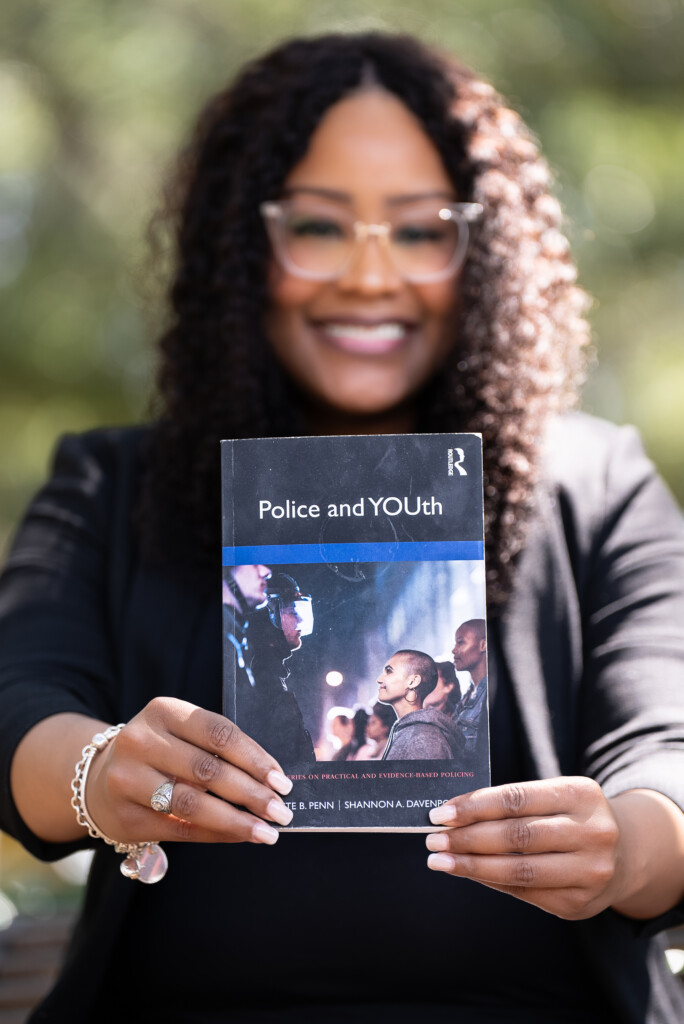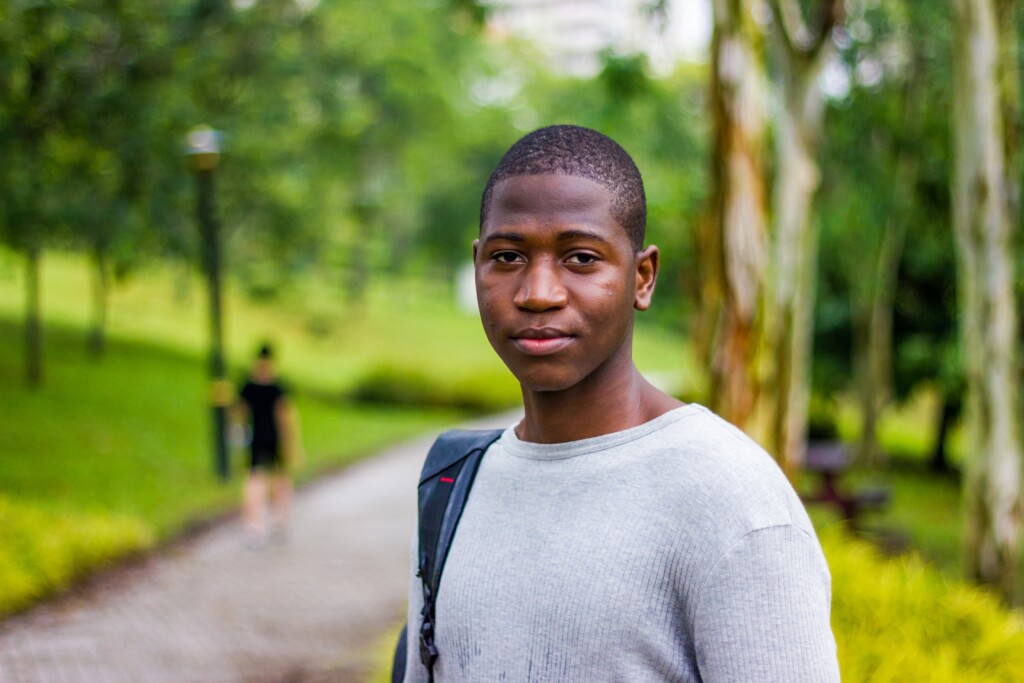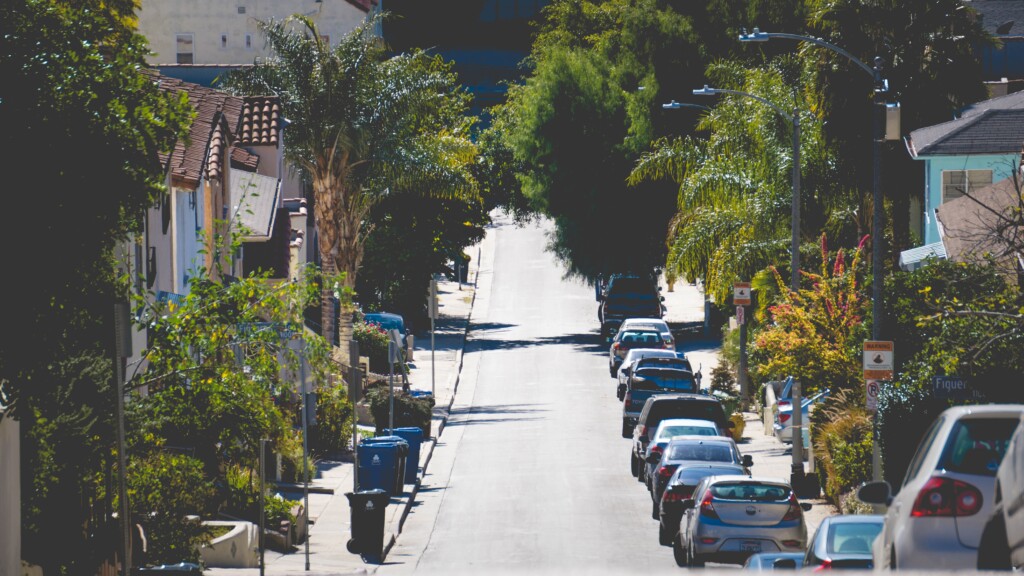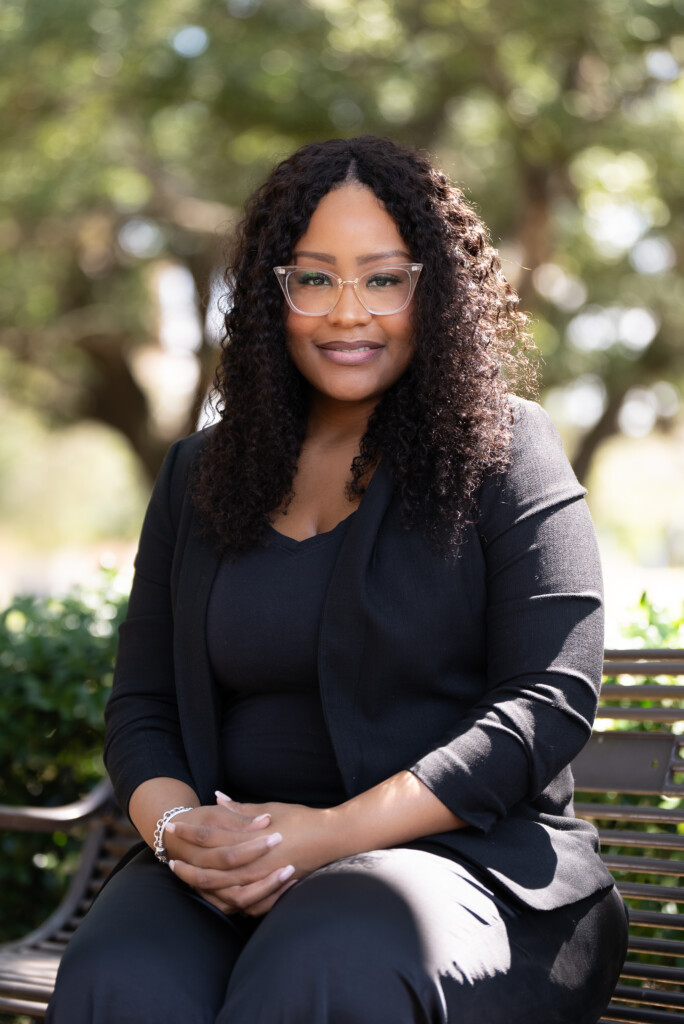PRAIRIE VIEW, Texas (Aug. 4, 2023) – The viral video of the murder of George Floyd by police officers compelled millions of protestors to the streets during the summer of 2020. For some, the disturbing incident shocked them into action; for others, it was another reminder of the racial bias and inequities that often lead to over-policing and the use of excessive force by officers in Black neighborhoods.
Social media and organizations like the Black Lives Matter Movement have lifted the veil on many of the atrocities of injustice and mismanagement, elevating the names of Michael Brown, Jordan Edwards, Jessica Hernandez, Ty’re King, Laquan McDonald, Tamir Rice, Jesse Romero, Stephen Watts and more into the public forum.
Between 2015-2017, proportionate killings escalated. In 2015, Black and Hispanic youth comprised 38% of the population, but 44% of adolescents were killed by the police (8 out of 18). In 2016, it increased to 63% (6 out of 10), and in the first five months of 2017, Black youth accounted for 11 out of 14 deaths (79%) but comprised only 14.1% of youth under 17.
Every death devastates community trust, furthering racial and ethnic disparities as a result of the tragedy and continuing to isolate and oppress Black and Brown communities.
Shannon Davenport says understanding is the first step to transformation. “We must identify the essence of the problem to find solutions or provide resources. We must know what we’re dealing with at the root to help the situation, what took place and what transpired.”
Davenport is a juvenile justice doctoral candidate at Prairie View A&M University (the only PhD. program of its kind in the country). Due to graduate this summer, she has dedicated her academic and professional career to identifying sustainable solutions that encourage conversations across the divide. Her dissertation research examines the interactions between youth and police officers and police officers’ perspectives of youth.
In her new book Police and YOUth, Davenport and her mentor and co-author, Everette Penn, explore policing practices and biases that influence the relationship between law enforcement, Black youth and their communities. Readers learn proven strategies to create partnerships between officers and at-risk teens using research and empirical evidence.
Over-policing, a National Health Crisis for Black Youth
Living in highly policed communities impacts how young people perceive law enforcement and who they are. It could also affect how they view their future selves and their motivation for participating in society.
A 2021 Johns Hopkins Medicine study that examined scientific data from 1980 to 2020 found that exposure to police can trigger anxiety and a flight-or-fight reaction in Black children at the mere sight of an officer.
Even when officers assisted in routine encounters, it was detrimental to the well-being of Black youth ages 9-26 and increased chances of poor mental health, substance abuse, risky sexual behavior and threatened safety.
With 1 in 3 Black children living below the poverty line and nearly half of Black families at risk of homeless and food insecurity, the consequence of incarceration can exacerbate economic disparities that harm families and communities.
Involvement in the criminal system can place Black youth at risk of losing housing, separation from family and loss of instructional credits or financial aid, further impacting “public regard, sadness, anger, external behaviors, fears and stress.” After facing diminished opportunity and well-being, increased hopelessness and alienation from the larger society, adolescents are more likely to engage in criminal conduct as adults.
According to a University of Washington study led by Annie McGlynn-Wright, a former postdoctoral fellow at Tulane University, Black teens are likelier to have a negative experience that creates a “system response.” Her research concluded that Black youth who encountered the police by 8th grade were 11 times more likely to be arrested by age 20.
For instance, following a misunderstanding during a hit-and-run incident and subsequent violent altercation with officers in 2016, 16-year-old Maryland native Brianna Stuart was left with physical and psychological scars. She quit soccer and couldn’t attend college or pass a medical exam to enlist in the U.S. Army and later incurred charges in an unrelated incident. Her traumatic encounter shaped her life—decisions and behaviors—well into adulthood.
Stuart represents a subgroup of Black girls and their families who often find themselves at the mercy of law enforcement. In New Orleans, every girl involved in a use-of-force altercation was Black. Black girls also had more contact with officers as suspects and victims of crimes in Indianapolis. And in California, Black girls between ages 15-19 were four times as likely than their white counterparts to go to the hospital following a police encounter.
A lack of trust threatens the fabric that holds society together and erodes the belief that being a law-abiding citizen is fairly rewarded.
Police and YOUth, Creating Partnerships Between At-risk Teens and Law Enforcement
Generations of Black youth carry historical and systematic wounds, fears and skepticism, so it’s no surprise that Davenport wasn’t too fond of law enforcement as a child and teen. “Growing up in certain neighborhoods, we learn that the police are the enemy or bad people,” said Davenport. Much of this inspired her studies in youth relations, police legitimacy, emotional regulation, at-risk youth and her eagerness to co-author her first book.
“I want to get the police officer’s perspective, learn how they see their interactions with the youth and what we can do to serve the two groups better,” said Davenport.
The book is germane to Texas schools and law enforcement (which must comply with the Community Safety Education Act of Texas) and ideal for students, educators, police officers and community members. “It’s for individuals working in the field and to help inform police officers of the need for 21st-century community policing,” explained Davenport. “The book provides background knowledge for policyholders and makers to see the significance of specific policies to advance awareness. It also allows readers to see where we are, where we were in society, how we progress and where we’re going.”
The comprehensive first edition includes chapters on American Policing: Yesterday, Today, and Tomorrow; Youth is Never Wasted on the Young and Resources to Reduce the Social Distance between Police and YOUth.
“Even if you’re a parent, you can pick up the book and say, ‘Hey, my youth is going through the same developmental process. Now I understand why they’re acting out or not making rational decisions.'”
A Disproportionate Representation of Black Youth
National self-reporting data reveals that white and youth of color engage in illegal behavior at similar rates. But throughout the U.S., Hispanic and African Americans are systematically profiled and targeted. They are five times more likely to be incarcerated or committed and twice as likely to be sentenced to life without parole or the death penalty. Black youth also have a six times greater likelihood, and Hispanic youth have a three times higher chance of being victims of a police shooting than their white counterparts.
While Black youth comprised only 13% of children under 18 in the U.S., between 2015-2019, of the 21,000 youth treated in emergency rooms nationwide from nonfatal injuries by police and security guards, 7,000 (one-third) were Black.
In 2006, police stopped 80% of Black and 38% of Hispanic youth in New York City between 16-17 years old, a drastic comparison to only 10% of white youth of the same age. While they were 16% of youth ages 7-17, they accounted for 59% of children in detention centers. The Mandel Legal Aid Clinic at the University of Chicago reported that law-abiding Black youth in the South Side of Chicago in the last five years were regularly stopped and frisked by the police without cause.
The discrepancies extend into schools, furthering the “school-to-prison pipeline.” “Historically, school police acted as state agents to suppress student organizing and movement building and to maintain the racially segregated status quo.” Today, the majority of Black and Brown schools have increased police presence, surveillance and social media monitoring and made efforts to arm teachers as a response to shootings at predominately white schools.
Education institutions should be a place of learning and self-development. Yet, Black youth are often subject to zero-tolerance disciplinary policies that make students twice as likely as their white peers to be suspended, expelled and referred to law enforcement for even minor infractions. In 2017, Black youth accounted for 35% of juvenile court cases and 40% of youth detainees, with Black boys representing 43% and Black girls 34% of detained juveniles. Black girls were also 2.7 times more likely to be referred to the juvenile justice system and 1.2 times more likely to be incarcerated than white girls of the same age.
The harsh reality is that Black and Brown youth are often perceived and treated as adults and not afforded the privileges of “physical safety, public affirmation, adventure, experimentation and social and academic freedom.” They are nine times more likely to be tried as adults, and in 2014, 52% of youth transferred to adult courts were Black, breaking a thirty-year record high.
Research by Dr. Phillip Atiba Goff shows that “we often perceive Black youth as 4.5 years older than they are,” said Kristin Henning, the director of the Juvenile Justice Clinic at Georgetown University’s law school. Data has shown that children 23 years old and younger have brains that are not fully developed, making incarceration a cruel and inhumane punishment. “America has a long history of failing to see Black children as children. So when Black children engage in even normal adolescent behaviors, they are more likely to be perceived as threatening or dangerous.” Henning has represented accused youth in Washington, DC, for over 25 years, of which only four were white. When engaged in adolescent behavior, Black boys are more likely to be perceived as culpable for punishment.
“Kids are thrown into an adult role and often face repercussions with law enforcement, even if it’s just normal teen behavior. So, instead of a little warning, Black girls and boys find themselves in court,” said Davenport.
Henning proposes a softened approach where Black youth are engaged as children, employing dialogue that reduces the need for police officers in schools and benign interactions, opting for healthy safety solutions that teach them how to resolve conflicts.
“They’re still impressionable, and we want to make sure that we help them with the transition of finding themselves with different tools and skill sets to be productive in the future,” said Davenport.
Advocates Demand Solutions
Without adequate corrective action, many communities feel helpless. Officers seldom face charges, and fewer than 1 in every 12 reported complaints of police misconduct receive disciplinary action.
There isn’t an overnight, one-sized fits all solution to the deep-rooted problem. However, two evidence-supported recommendations have emerged from recent studies. The first, clouded in controversy, is the disinvestment in over-policing. Alternatives range from the prohibited use of school resource officers to the increased use of diversion programs, the implication of independent investigations and transparent data collection that ensure officers are equitably held accountable for misconduct.
Despite empirical evidence that indicates the negative ramifications of over-policing on Black communities and the poor correlation between law enforcement investments and safety, national and local spending on police departments and prisons has increased in the last 30 years. Funds allocated to policing programs continue to outpace social safety services and resources that stabilize communities and improve access to youth initiatives, mental health benefits, job opportunities, housing subsidies, education and food resourcing. In Los Angeles, disparities in spending are the most dramatic, with investments 70 times larger in the police department than in youth programs.
The second proposed framework for reform is policies that are age-appropriate, trauma-informed, collaborative, accessible and community-inclusive. Adolescents differ from adults at the cognitive level, mandating the need for officers to use a different approach. There is a glaring need for standardized regulation and uniform metrics for assessing and measuring conduct. Such policies include the use of youth de-escalation techniques, the application of force and mandated training.
Teachers, camp counselors, childcare providers and health care workers have state and national regulatory standards that govern their interactions with youth. However, police departments don’t have a strategy or rely on local, old, outdated policies developed with little or no input from the state and community. But for outcomes that “promote public trust, law enforcement agencies should involve the community, particularly young people, in the process of developing and evaluating their policies and procedures.” When clinicians, scientists, public health practitioners and policymakers work with local government to implement reforms, they can mitigate the negative health implications of policing youth.
Without adequate training, a significant portion of law enforcement lacks sufficient skills to police young adults, manage and support youth with disabilities and identify their implicit bias.
In the absence of national or statewide best practices, Nonprofits like Strategies for Youth instruct officers in techniques that reduce police violence, deter the use of force and decrease the overrepresentation of Black and Brown youth in the justice system. They’ve trained law enforcement in over 20 states on the developmental capacity differences between children and adults, how to identify trauma, pace their speech, ask questions and use age-appropriate language that deescalates conflicts.
Lessons Learned for the TAPS Academy: A Platform for Community Policing
Davenport and Penn’s book captures the work and best practices gained from the Teens and Police Services (TAPS) Academy. “Writing the book has allowed me to use the information I learned from PV’s doctoral program, my experience and information I received from working hands-on with the organization,” said Davenport.
Her research and work with Penn inspired her to learn more about law enforcement’s inner workings. “I wanted to be the nexus to bring the two groups together, so I figured why not only have the personal experience but get my Ph.D. to help move the field forward.”
Davenport joined the TAPS Academy as an intern and has worked for the organization for five years in various juvenile facilities. She credits TAPS for expanding her academic knowledge and personal bias towards officers. “It’s helped me discover my purpose. I was just trying to gain experience to get a job. I didn’t know what I would do and didn’t have a passion for anything at the time.”
Founded by Dr. Everette Penn, a criminologist and a professor at the University of Houston-Clear Lake, the Houston Texas Police Department and the U.S. Department of Justice, TAPS provides an equitable platform for at-risk youth and law enforcement to exchange ideas and learn about the most pressing issues impacting both groups. “The organization gives youth and law enforcement a voice to collectively come together and say, ‘Hey, what are your concerns? Tell us why you don’t like officers and your experience.’ And you have officers respond to those questions. The important thing with the youth is that you have to be honest because they pick up on deception,” said Davenport.
The program follows an 11-week curriculum that spans topics most relevant to youth and their families, including conflict resolution, teamwork, bullying, truancy, drug abuse, dating, service-learning and slang/jargon. At the end of the program, both sides have a better sense of the other as people. Many participants build a rapport, creating a community where the police know the neighbors and the youth are familiar with and not fearful of their local officers.
Although TAPS is available to all youth ages 10-24, it focuses on at-risk young adults identified by the Texas Education Agency, specifically adolescents in juvenile facilities and alternative and low-performing high schools. Davenport believes targeting the youth is the best way to connect with the community. “To reach the masses, youth is the demographic we should target first. Sometimes adults are already set in their ways, and changing their mindset is hard. Youth grow up to become adults, and if you reach them early enough, you can instill skill sets and tools to help them make that transition. We can change their trajectory,” said Davenport.
TAPS is funded by the Office of Community Oriented Policing Services of the U.S. Department of Justice and combines community policing and best practices from in-school and public initiatives, including Drug Abuse Resistance Education, the Gang Resistance Education and Training Program, Citizen’s Police Academy and Explorers to implement an engaging, participatory environment.
Using Policing by TOTALS (trust, openness, transparency, accessibility, legitimacy and safety), TAPS has produced positive results for participating youth and officers. Youth demonstrated a 30-50% positive change in trust, connectedness and respect between pre- and post-program evaluations. These results are significant as minority youth, particularly African Americans, indicate only 37% trust, like, connectedness and legitimacy in the police, compared to 59% of white Americans who have confidence in law enforcement.
Officers also demonstrated an increase in youth understanding, equipping law enforcement with the insight to improve youth interactions.
A Lifetime Dedication to the Work
Davenport is currently working on her dissertation but is already looking forward to writing the book’s second edition. “We must keep the information updated because things are constantly changing.” She notes trends in the news and social and wants to ensure she’s keeping the content relevant. Davenport is also planning to continue to publish more research articles on youth and police engagement and social equality topics to continue to reform the field of study. After completing her dissertation this summer, she plans to share her research with various peer journals.
Click here to view more of PVAMU’s notable graduates.
By Whitney Stovall
-PVAMU-






